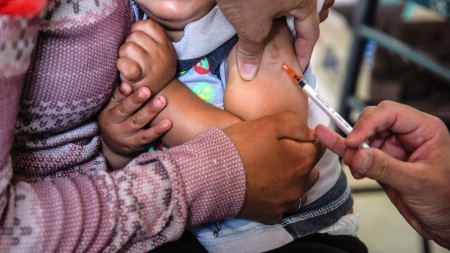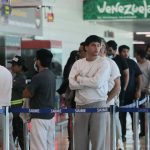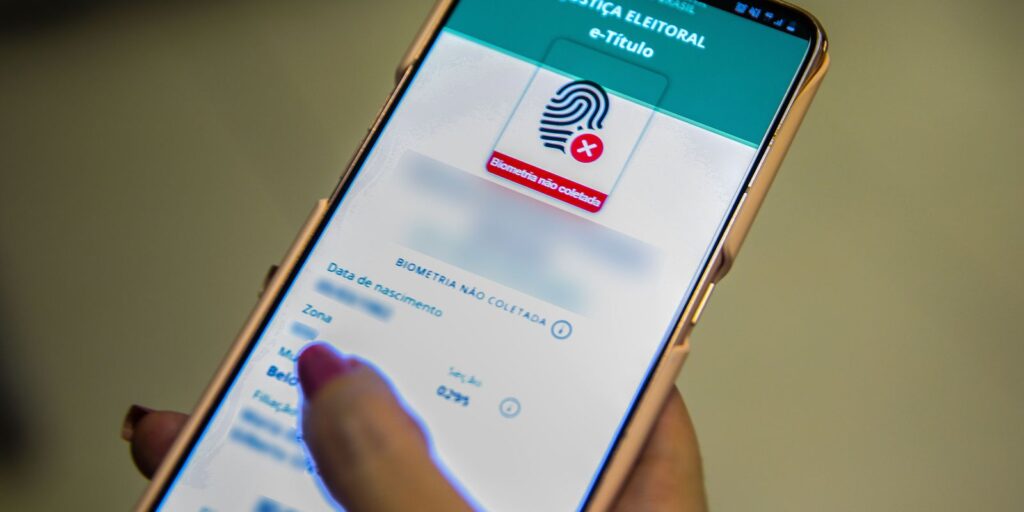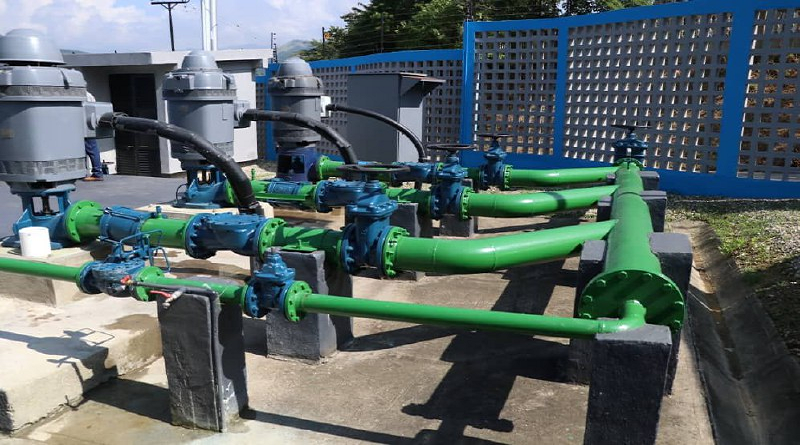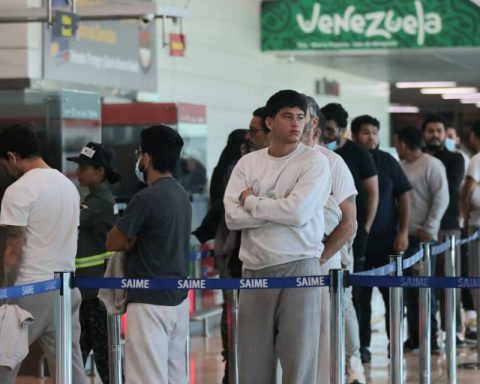Health authorities from all over the country, gathered in the Federal Health Council (Cofesa)called on the population to accompany the National Vaccination Campaign against measles, rubella, mumps and poliomyelitis for girls and boys aged 13 months to 4 years which, 17 days after completion, barely reached 36.7% of the target population and not the estimated 77%.
The meeting took place at the headquarters of the National Administration of Laboratories and Health Institutes (Anlis) “Dr. Carlos Malbrán”, it was officially reported.
The 2022 Vaccination Campaign against measles, rubella, mumps and poliomyelitis was launched on October 1 at the site of the Tecnópolis mega exhibition of science, culture and technology, in the Buenos Aires town of Villa Martelli.
On that occasion, the Minister of Health, Carla Vizzettihad highlighted that “Argentina eliminated measles in 2000 and polio in 1984 thanks to vaccines, these follow-up campaigns reinforce the vaccination of those who postponed it during the pandemic and protect us from outbreaks of these viruses that arise in other places in the world”.
The vaccination campaign
The National Vaccination Calendar contemplates protection against measles, rubella and mumps through triple viral vaccination for girls and boys between 12 months and 5 years, while for protection against polio, it establishes three doses at 2, 4 and 6 months and a booster at 5 years old.
During the meeting, the officials warned that, 17 days after the end of the Campaign, 1.4 million girls and boys have not yet received the doses of the triple viral and inactivated polio vaccines, free, mandatory and additional to those of the national calendar. , which are necessary to support the prevention of these diseases in the country.
In this sense, the specialists expressed their concern about the progress, which until yesterday had reached 36.7 percent coverage, when the expected goal throughout the country for the same period is 77 percent and which has as its goal ” reach 95 percent or more of the target population,” the National Ministry of Health specified in a statement.
The authorities agreed on the need to warn about the importance of applying these additional doses to protect the susceptible population that has not developed the expected immune response, which is usually around 8 to 10 percent of those who received them in the scheme. primary.
Vizzotti assured that “All the jurisdictions are making an enormous effort and Nation distributed funds and all the necessary supplies to ensure the success of this campaign” which runs until November 13.

In turn, the minister considered that “the collaboration of pediatricians is essential to motivate vaccination, and we know of their commitment.”
The official considered it a “challenge” to comply with this campaign in large cities, such as the Metropolitan Area of Buenos Aires (AMBA), which, in the event of a reintroduction of diseases, “is usually the region with the highest risk, given the massive movement of people”.
For his part, the undersecretary of Sanitary Strategies, Juan Manuel Castelli, added that it is necessary to achieve 95 percent coverage and “homogeneously” throughout the country to achieve complete success of the campaign.
In addition, the official said that one of the causes of the slow progress of the campaign is the “low perception of risk” of the population in relation to diseases eliminated in Argentina such as measles, rubella and polio, but he stressed that this situation is he says “thanks to the success of the vaccines” and that “the risk of reintroduction is high for all countries”.
In addition, they stressed that the Campaign is carried out in a context in which it is necessary to develop actions to support the elimination of diseases such as measles, whose last outbreak of this disease registered in the country was the most important after achieving elimination, and it spread from August 2019 to March 2020, a period in which it caused 179 cases and one death.
Regarding rubella and congenital rubella syndrome, although no autochthonous cases have been reported in Argentina since 2009, when a susceptible pregnant person exposed to the rubella virus develops the disease during the first trimester of pregnancy, fetal infection occurs and congenital rubella syndrome in 90 percent of cases, they warned.
Congenital rubella syndrome causes fetal and neonatal deaths and serious malformations in the newborn, causing deafness, blindness, and structural and non-structural congenital heart disease, as well as serious late-onset disorders, such as diabetes or intellectual disability, among others.
To minimize the risk of outbreaks and cover the susceptible population, every 4 years (according to the accumulation of susceptibles) National Monitoring Campaigns (CNS) are carried out against measles, rubella and mumps in which an additional dose is given to boys and girls from 13 months to 4 years inclusive.
Since the last Follow-up Campaign in 2018, 713,000 girls and boys have accumulated, which indicates the need to carry out a new CNS to provide a second chance to the population that did not have access to vaccination and/or did not have an immune response to the dose. applied.
